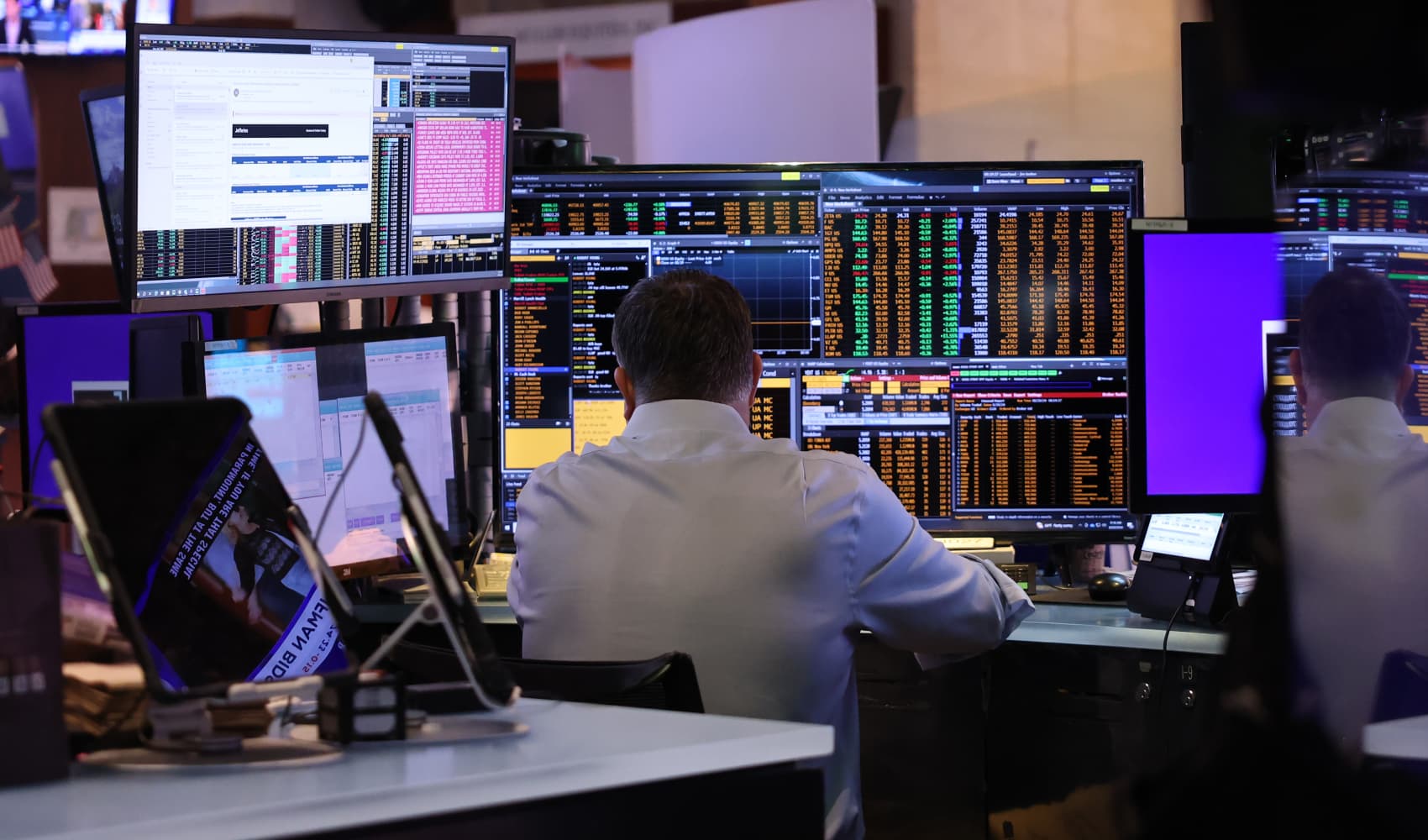
- Chinese electric car companies are outspending Tesla and traditional fuel-powered cars on research and development as a ratio to sales.
- Many Chinese automakers already spend as much as or more than their global peers on R&D as a percent of revenue, a significant increase from many years ago, Paul Gong, autos analyst at UBS, told CNBC.
- Geely's vice president of autos R&D, Ren Xiangfei, told CNBC late last month that while the company is looking to improve both hardware and software for cars, the latter can provide more differentiation.
BEIJING – U.S.-listed Chinese electric car companies are spending more on research as a ratio to sales than Tesla, according to CNBC analysis of the four automakers' first-quarter earnings.
It's a strategy for survival in China's cutthroat auto market, the largest in the world. New energy vehicles, which include both battery and hybrid-powered cars, have grown rapidly to more than 40% of sales.
Many Chinese automakers already spend as much as or more than their global peers on R&D as a percent of revenue, a significant increase from many years ago, Paul Gong, autos analyst at UBS, told CNBC. "In certain cases, even in terms of absolute dollars, it has bypassed."
Get top local stories in Philly delivered to you every morning. Sign up for NBC Philadelphia's News Headlines newsletter.
Of the four U.S.-listed Chinese electric car companies, Nio ranked first, spending nearly 29% of revenue in the first three months of the year on research and development. That's far higher than Tesla's ratio of 5.4% in the first quarter and 4.2% in the second. Elon Musk's company is known for having a relatively low ratio.
It's less clear whether that higher spending can translate into long-term competitiveness.
Nio has operated at a loss for years and only seen deliveries for its premium-priced cars pick up in the last several months. In addition to car launches, the company has in recent years held events to promote its battery services and other tech, including one on car "quality" in late June.
Money Report
"Everyone is talking about involution right now," Feng Shen, chairman of Nio's quality management committee said in Mandarin at the event, translated by CNBC. He was referring to a popular term in China to describe fierce competition, especially in the electric car industry.
"What companies should [compete] on is quality," Shen said, adding that "if you can't do a good job on quality, there's nothing you can say." He laid out Nio's wide-ranging plan for boosting product quality, starting primarily with new tech and supply chain innovation.
Shen, who is also executive vice president of Nio, was previously president of luxury EV brand Polestar in China and worked in quality management at Ford Motor in the U.S. and China.
Nio in September 2022 opened its second factory in Hefei city, a manufacturing hub for many car companies. The factory has around 2,000 human workers and 756 robots, which automate much of the production.
"The key is to digitize every stage of manufacturing," William Li, founder and CEO of Nio, told reporters in June, according to a CNBC translation of the Chinese remarks. He said if the digital system can be integrated across multiple levels of suppliers, the company can easily identify problems.
When asked about global production, Li said Nio would adhere to the same manufacturing standard but did not detail overseas plans.
Supply chain proximity
Hefei is the capital of Anhui province to the west of Shanghai. The region is called the Yangtze River Delta, which China claims is home to so many factories that a new energy vehicle manufacturer can find all the necessary parts within a four-hour drive.
China's Ministry of Industry and Information Technology told CNBC in a statement that it has worked with car manufacturers and suppliers to create hundreds of best-practice cases and application benchmarks for smart manufacturing in the industry.
"A key competitive advantage for Chinese companies in China is actually the highly effective or efficient supply chain," said Jing Yang, a director in Fitch Ratings' Asia-Pacific corporate ratings division, with a focus on Chinese autos.
She noted that can help Chinese electric car companies respond more quickly to customers and market needs than traditional automakers.
Another part of the region, Zhejiang province, is home to Hong Kong-listed auto giant Geely and its U.S.-listed electric car subsidiary Zeekr.
Zeekr's first-quarter results show the company spent 13% of sales on research and development. Parent Geely, which did not break out the figure in its first-quarter report, has spent at least 4% of revenue on research in the last four years, up significantly from prior years.
Geely's vice president of autos R&D, Ren Xiangfei, told CNBC late last month that while the company is looking to improve both hardware and software for cars, the latter can provide more differentiation.
"From users' perspective, the functions that bring more surprises must be implemented through software," Ren said in Mandarin, translated by CNBC.
Car software includes driver-assist, in-car entertainment and security features.
Ren noted that new energy vehicles can support more of these functions since they come with a larger battery than traditional fuel-powered cars.
"This will introduce a new concept, the software-defined car," he said.
Geely last month launched its "Aegis Short Blade Battery," which the automaker claims passed above-industry standard tests without exploding.
It's a rival to BYD's "blade battery" that arguably launched the company into its position as an EV leader. Geely ranked second in new energy vehicle sales in the first half of the year, putting Tesla in third place, according to the China Passenger Car Association.
Ren said the new battery, which is set for initial deployment in Geely cars, increases production costs by about 1,000 yuan (about $137.69) versus competitors' vehicles.
Since the chemical formula for making batteries is relatively mature, it's now more important to ensure consistency in manufacturing, he said. "That requires the support of a smart factory."
Geely has also released an electric car architecture called SEA that it says allows for quicker production of different sized vehicles.
"Vehicle platform is probably the most important thing to look at, and then consistency with their approach," said Taylor Ogan, Shenzhen-based CEO of Snow Bull Capital.
He said it's important to see that a company is delivering something fairly soon after announcing it, and that there are separate teams already working on future product releases. "I think that's the clear differentiator," he said.
Tech companies vs. automakers
UBS's Gong cautioned the ratio of research spend to sales, sometimes called R&D intensity, isn't a definitive measure of tech innovation.
"If they can sell more cars with a better profitability that basically means their innovative ways are probably right. Some of it may not be in cool features," Gong said, noting it could include systemized cost cutting. "Less fancy, but really powerful."
Xpeng had an R&D intensity of 20% in the first quarter. Li Auto's was only 11% but the company's range-extender cars have far outsold pure battery-electric vehicles.
When it comes to absolute U.S. dollars, Hong Kong-listed BYD spent the equivalent of $1.47 billion on research in the first quarter, or 8.5% of its revenue. That's more than Tesla's $1.15 billion spend on research and development during that time.
For the future, electric car companies are trying to differentiate themselves in terms of battery and software – two categories dominated by CATL and Huawei, respectively, said Jing Liu, professor of accounting and finance, and director of the investment research center at the Cheung Kong Graduate School of Business.
Liu said it's unlikely that a company can produce a better product than either supplier, but that means that ultimately it is difficult for automakers to stand out in a market where consumers can easily switch between brands.
Huawei has touted it spends at least 10% of revenue on R&D. CATL's intensity ratio was 5.4% in the first quarter.
— CNBC's Sonia Heng contributed to this report.






